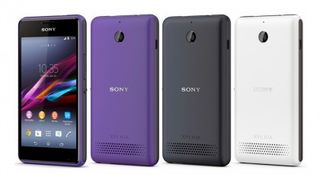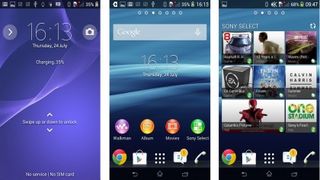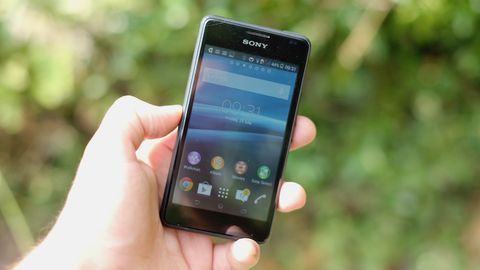Why you can trust TechRadar
Sony calls the Xperia E1 the "best smartphone in its class". They're big words, but you really need to look a bit deeper to see how limited this bold claim actually is.
It's based on the phones that were around in November 2013, and leaves out many of the mobiles you might consider Xperia E1 rivals – there's no comparison to the Motorola Moto E, ZTE Blade V, Nokia Lumia 630, and not even the Huawei Ascend Y300. If not flat-out unfair, it's at least out of date.
The moral of this story – don't believe the hype.
However, the Sony Xperia E1 is pretty aggressively priced, and leaves out most of the right things in order to keep the cost low. This is a no-nonsense 3G phone.
You miss out on 4G, in a time when this faster kind of mobile internet is starting to filter down to ultra-cheap phones like the Alcatel One Touch Pop S3 and the EE Kestrel. Are people who want to buy a cheap phone likely pay the premium for a good 4G contract though? I don't think so. A 3G-only phone still makes sense at this price point, for now.

Other bits chopped out include ac-grade Wi-Fi, NFC and an IR transmitter. Just like 4G, though, I can't image these being particularly high priorities for someone looking to buy a phone on a very tight budget.
Why? They all require other bits of (generally pricey) gadgetry to be particularly useful. You'd need an ac-compatible router to make use of Wi-Fi ac, an NFC speaker or pair of headphones to make good use of NFC now that it isn't used all that much for wireless payments. And you need a good home entertainment system to warrant using an IR transmitter to turn your Xperia E1 into a universal remote.
Sticking to the basics instead, the Sony Xperia E1 gets you n-grade Wi-Fi, GPS, Bluetooth 4.0 and 21Mbps HSPA (its fastest 3G standard). This is actually more than enough for most people, not just those out for a cheap phone. Crucially, it should mean you could use the phone with an Android Wear smartwatch like the Moto 360 or LG G Watch should you want to invest in one of those further down the line.
The hardware is basic but solid, but what about the software? The Sony Xperia E1 runs Android 4.3 Jelly Bean with the same style of custom interface seen in Sony's other Android phones.

Android 4.3 is not the latest version of the Google mobile OS, and hasn't been for a while now. Sony has confirmed that the Xperia E1 will get Android 4.4.2, although I wouldn't expect such updates to turn up quickly.
Why did the phone ship with an already-old version of Android? I imagine it's down to the extra work needed to get Android 4.4.2 and the custom Sony interface working on as low-end an engine as the Xperia E1 has.
The phone uses a Qualcomm MSM8210 Snapdragon 200 processor. It's a low-end dual-core 1.2GHz chipset, but can provide perfectly good performance in my experience.
The real limitation is the phone's meagre 512MB RAM. It's very difficult to get a phone with this little memory running smoothly on Android 4.4 and Android 4.3 doesn't run perfectly either.
Several phones around the same price do have a solid 1GB of RAM, including the Alcatel One Touch Pop S3, the Motorola Moto E and the ZTE Blade V. Trying to 'get away' with 512MB is a misstep on Sony's part.
Andrew is a freelance journalist and has been writing and editing for some of the UK's top tech and lifestyle publications including TrustedReviews, Stuff, T3, TechRadar, Lifehacker and others.

This has to be the most absurd portable power station ever launched — Asus's Mjolnir throws the hammer at rivals with innovative design that's likely to divide opinions

Pixel's new satellite feature could show people where you are on Google Maps

I really hope Google doesn't promise 7 years of Android for the Pixel 8a

